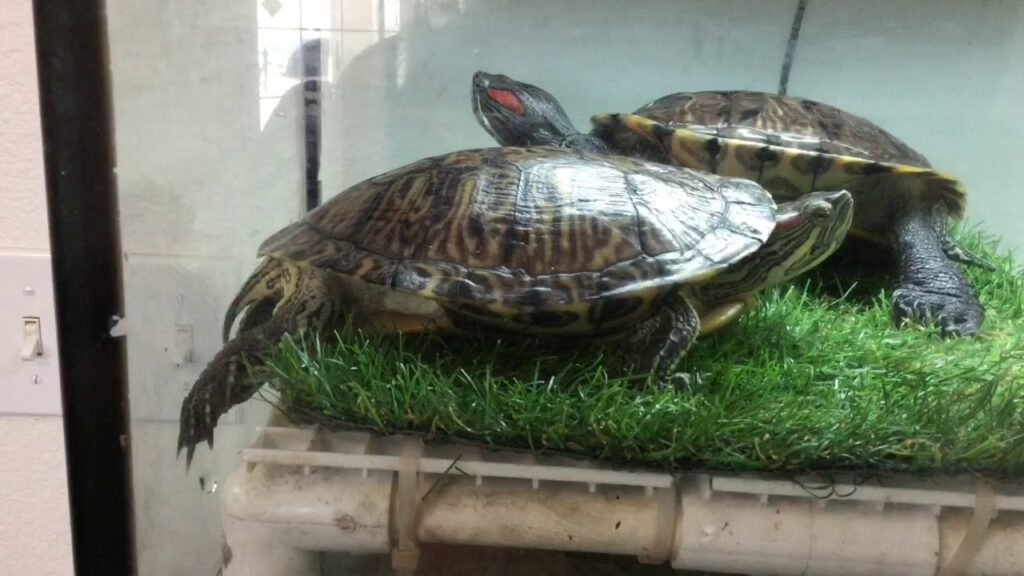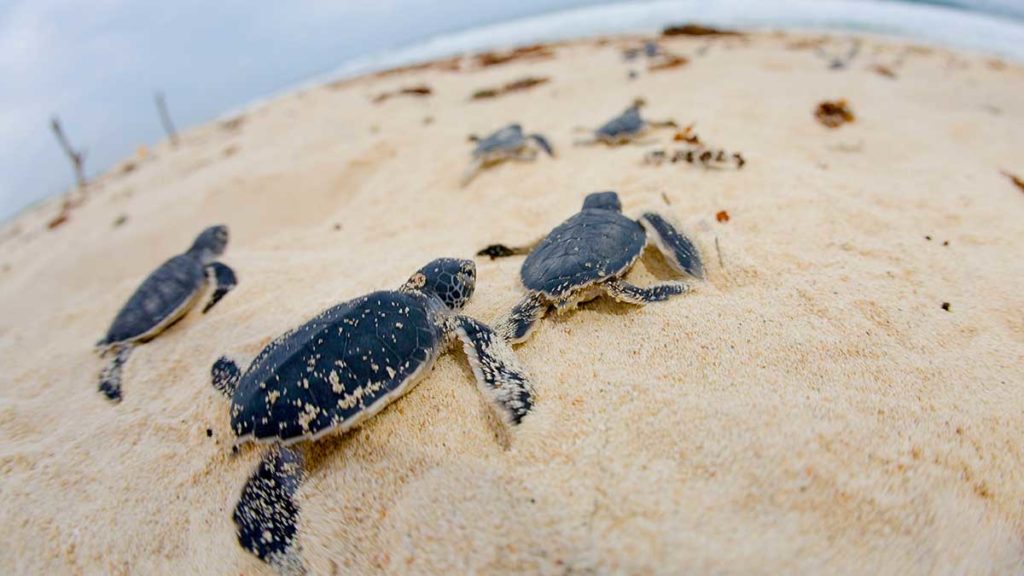Have you ever wondered how to create the perfect environment for baby turtles to nest and lay their eggs? If so, you’re in luck! In this article, we will provide you with some valuable tips on how to create a relaxing atmosphere for these adorable creatures to thrive. From providing the right temperature and humidity levels to creating a safe and secure nesting site, we’ve got you covered. So, whether you’re a turtle enthusiast or just want to help protect these endangered species, keep reading to learn how to create the ideal environment for baby turtles’ nesting and egg-laying.
Choosing the Right Location
When it comes to creating a suitable environment for baby turtles’ nesting and egg-laying, choosing the right location is crucial. To begin, conduct thorough research on the species’ natural habitat. Each turtle species has specific preferences for nesting, so understanding their natural habitat will help you create an environment that closely mimics their needs. Consider factors such as the type of soil, drainage, and sunlight exposure that the species prefers.
Research on the Species’ Natural Habitat
To create a relaxing environment for baby turtles, it is essential to research the specific species’ natural habitat. Each turtle species has unique requirements for nesting and egg-laying. Some turtles prefer sandy beaches, while others prefer marshy areas or fields with soft soils. Understanding the natural habitat of the species you are working with will help you replicate these conditions in your nesting area.
Consider the Soil Type
The soil type plays a significant role in creating a suitable nesting area for baby turtles. Many turtle species prefer to lay their eggs in soft, sandy soils that are easy to dig into. Sandy soil provides the ideal texture for turtles to excavate their nests and ensures proper moisture retention. It is crucial to choose a nesting area with the appropriate soil type to promote successful egg-laying and hatching.
Evaluate the Drainage
Another essential factor to consider when choosing a location for baby turtle nesting is the drainage. Turtles require a nesting area with good drainage to prevent waterlogging, which can drown the eggs or cause them to rot. Ensure that the nesting area has proper drainage to allow excess water to flow away from the nests and provide a suitable environment for the eggs to develop.
Check Sunlight Exposure
Sunlight exposure is vital for the development of baby turtles inside their eggs. It is crucial to choose a nesting area with adequate sunlight exposure, as it helps regulate the temperature inside the nest. Different species have varying requirements when it comes to sunlight exposure, so be sure to research the specific needs of the species you are working with and select a location that provides the appropriate amount of sunlight.
Creating a Suitable Nesting Area
Once you have chosen the right location, it is essential to create a suitable nesting area for baby turtles. This involves removing obstacles and hazards, providing adequate space, ensuring proper nest depth, and adjusting temperature and humidity.
Clearing Obstacles and Hazards
Before the nesting season begins, it is crucial to clear the nesting area of any potential obstacles or hazards that could hinder the nesting process. Remove any debris, such as fallen branches or rocks, as they can disrupt the nesting site or potentially harm the nesting turtles. Additionally, check for any potential predator hiding spots nearby, such as dense vegetation or burrows. Creating a clear and safe nesting area will enhance the chances of successful nesting and egg-laying.
Providing Adequate Space
Baby turtles require enough space to lay their eggs and dig their nests comfortably. Ensure that the nesting area has enough room to accommodate multiple nesting turtles. Providing adequate space allows the turtles to choose their preferred nesting spot and reduces the risk of overcrowding, which can lead to disturbed or abandoned nests.
Ensuring Proper Nest Depth
The depth of the nest is crucial for the development and survival of turtle eggs. Different turtle species have specific requirements for nest depth, so it is essential to research the needs of the species you are working with. Generally, the depth should be enough to protect the eggs from predators and fluctuating temperatures. Maintaining the appropriate nest depth ensures the optimal conditions for successful egg incubation.
Adjusting Temperature and Humidity
Regulating the temperature and humidity in the nesting area is important for the development of turtle eggs. Some turtle species require specific temperature ranges for successful incubation, while others are more tolerant. Research the temperature and humidity preferences of the species you are working with and make adjustments as necessary. Providing a suitable environment with the right temperature and humidity levels enhances the chances of successful egg development and hatching.
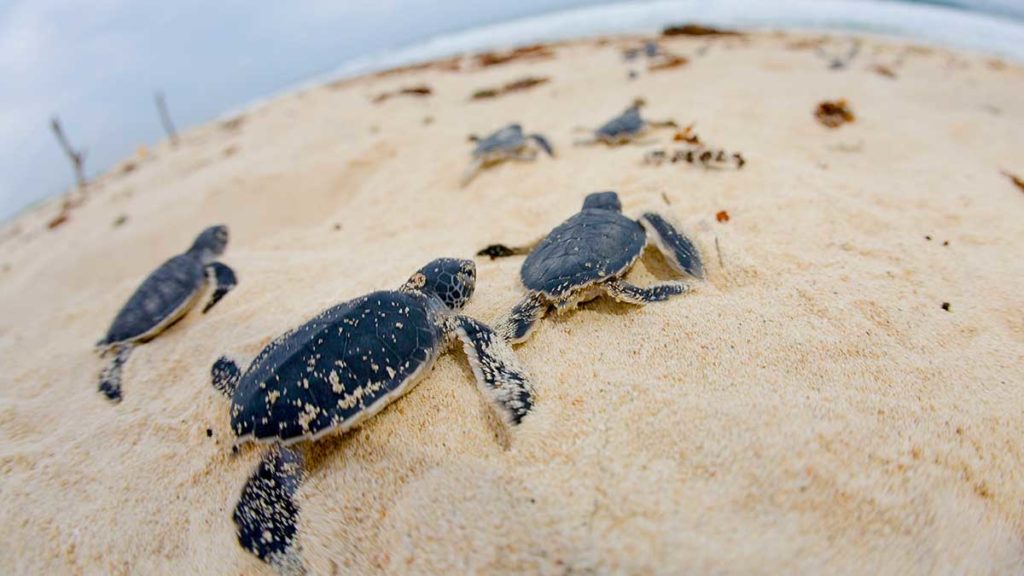
Managing Vegetation and Landscaping
Properly managing vegetation and landscaping in the nesting area is crucial for creating a relaxing environment for baby turtles. This involves maintaining native plants, avoiding chemical use, creating natural shade, and mulching the area.
Maintaining Native Plants
Planting and maintaining native plants in the nesting area is important as they provide natural habitats and food sources for baby turtles. Native plants are more likely to attract insects and other small creatures that turtles feed on. Additionally, native plants are better adapted to the local climate and require less maintenance, making them a sustainable choice for landscaping.
Avoiding Chemical Use
Chemicals such as pesticides and herbicides can be harmful to turtles and their eggs. Avoid using chemicals in the nesting area to prevent potential contamination or toxic effects on the turtles’ health. Choose natural alternatives for weed control and pest management, such as hand-pulling weeds or introducing beneficial insects.
Creating Natural Shade
Creating natural shade in the nesting area is important as it helps regulate the temperature and provides a safe resting spot for turtles. Planting trees, shrubs, or installing trellises with climbing vines can provide shade and create a more appealing environment for nesting turtles. Ensure that the shade does not completely block out sunlight, as baby turtles still require adequate exposure for proper development.
Mulching the Area
Mulching the nesting area can help maintain moisture levels and regulate temperature. Use organic mulch, such as shredded leaves or straw, to create a protective layer over the soil. This layer helps retain moisture in the soil, preventing it from drying out, and also acts as insulation to regulate temperature fluctuations. Mulching also helps suppress weed growth, reducing competition for resources and providing a more favorable environment for nesting turtles.
Installing Protective Barriers
Installing protective barriers around the nesting area is essential to ensure the safety of the baby turtles and their eggs. This involves using fencing or mesh, preventing predators’ access, securing nesting sites, and deterring human interference.
Using Fencing or Mesh
Installing fencing or mesh around the nesting area can help prevent unwanted access by predators or other potential disturbances. Choose a barrier that is tall enough to deter predators from reaching the nesting site. Ensure that the fencing or mesh is buried in the ground to prevent animals from digging under it.
Preventing Predators’ Access
Predators pose a significant threat to turtle eggs and nesting sites. Take measures to prevent predators, such as raccoons or dogs, from accessing the nesting area. Use deterrents such as motion-activated lights or sound devices to scare away potential predators. Additionally, removing potential hiding spots for predators, such as dense vegetation or fallen logs, can discourage them from approaching the nesting area.
Securing Nesting Sites
Some turtle species, such as sea turtles, nest on beaches that are susceptible to erosion or human disturbances. Implement measures to secure nesting sites by building temporary barriers or installing signs to prevent accidental trampling or disturbances. Secure the nesting sites to ensure the safety and preservation of the eggs.
Deterring Human Interference
Human interference can significantly impact turtle nesting and egg-laying. Educate the public about the importance of respecting nesting sites and avoiding unnecessary disturbances. Install signs or barriers to inform people about the presence of nesting turtles and the need to keep a safe distance. Encourage responsible behavior and discourage activities that could harm the turtles or their eggs.
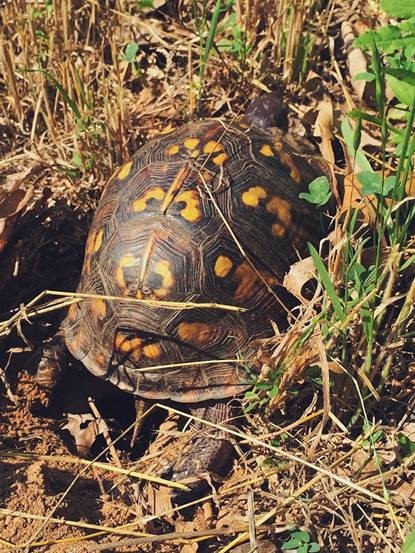
Ensuring Water Access and Quality
Water access and quality are crucial for turtle nesting sites. The proximity to water sources, maintaining proper water levels, monitoring and improving water quality, and creating safe entry and exit points are essential considerations.
Proximity to Water Sources
Turtles require access to water throughout their nesting and egg-laying process. Choose a nesting area that is close to suitable water sources, such as ponds, lakes, or rivers. The proximity to water allows the turtles to easily reach the nesting area, lay their eggs, and return to the water afterward.
Maintaining Proper Water Levels
Maintaining proper water levels in the nearby water sources is important for turtle nesting sites. Fluctuations in water levels can flood the nests or expose them to potential predators. Monitor the water levels and implement measures to maintain a stable environment for the nesting turtles. This may involve artificial water management techniques, such as maintaining water levels through damming or installing water control structures.
Monitoring and Improving Water Quality
Water quality is essential for the overall health and well-being of turtles. Poor water quality can negatively impact nesting sites and affect the survival of eggs and hatchlings. Regularly monitor the water quality in the nesting area and nearby water sources. Implement measures to improve water quality if necessary, such as reducing pollution inputs or implementing water treatment techniques.
Creating Safe Entry and Exit Points
Providing safe entry and exit points from the water to the nesting area is crucial for the nesting turtles. Ensure that there are no barriers or obstacles that could prevent turtles from easily accessing their nesting site. Clear the path and create a gradual slope or a gentle incline for turtles to easily navigate between the water and the nesting area.
Providing Nesting Material
Providing suitable nesting material is important for baby turtles to create their nests. This involves using soft and sandy substrates, avoiding hard or rocky surfaces, ensuring moisture retention, and avoiding artificial nesting materials.
Using Soft and Sandy Substrates
Turtles prefer to lay their eggs in soft and sandy substrates that are easy to dig into. Choose a nesting area with soil that has a fine texture and is loose enough for the turtles to excavate their nests. This type of substrate allows the eggs to be securely buried and ensures proper oxygen exchange.
Avoiding Hard or Rocky Surfaces
Avoid nesting areas with hard or rocky surfaces, as they can make it challenging for turtles to dig their nests. Hard surfaces can also damage the delicate turtle eggs. The nesting area should have a substrate that is free from large rocks or debris that could hinder the nesting process.
Ensuring Moisture Retention
Moisture retention is essential for the successful development of turtle eggs. The nesting material should have the ability to retain moisture without becoming waterlogged. Sandy soil with good drainage provides an ideal balance of moisture retention and proper drainage. Regularly monitor the moisture levels in the nesting area and make adjustments as necessary to create a suitable environment for the eggs.
Avoiding Artificial Nesting Materials
Artificial nesting materials, such as plastic or rubber, should be avoided as they can be harmful to turtles and their eggs. Turtles have evolved to lay their eggs in natural environments, and using artificial materials can disrupt their nesting instincts. Stick to natural materials, such as sand or soil, to ensure a suitable nesting environment for the baby turtles.
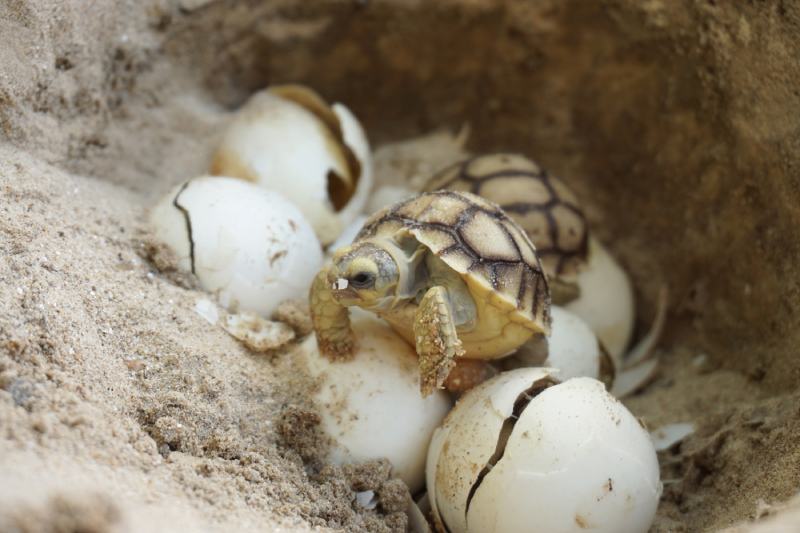
Diminishing Human Disturbance
Minimizing human disturbance in and around the nesting area is crucial for the wellbeing of baby turtles. This involves minimizing noise and bright lights, encouraging low-traffic areas, educating the public, and enforcing nesting-site protection laws.
Minimizing Noise and Bright Lights
Excessive noise and bright lights can stress turtles and interfere with their nesting and egg-laying behaviors. Minimize noise disturbances, such as loud machinery or music, around the nesting area. Additionally, reduce the use of bright lights that can disorient nesting turtles. Minimizing noise and bright lights in the vicinity creates a more serene and suitable environment for the turtles.
Encouraging Low-Traffic Areas
Reducing human traffic around the nesting area is essential to prevent disturbances and potential harm to the turtles. Encourage the use of designated paths or restrict access to certain areas during the nesting season. By creating low-traffic areas, you can minimize the risk of accidental trampling or disturbances to the nesting turtles and their eggs.
Educating the Public
Educating the public about the importance of protecting nesting turtles and their habitats is crucial for minimizing human disturbance. Raise awareness about the nesting season, the needs of the turtles, and the potential consequences of human interference. Provide educational materials, such as signs or brochures, that inform the public about responsible behavior around nesting areas.
Enforcing Nesting-site Protection Laws
Nesting-site protection laws exist to safeguard turtles and their nesting habitats. Ensure that these laws are enforced and that violations are appropriately addressed. Work closely with local authorities, law enforcement, and conservation organizations to ensure the proper enforcement of these laws. By enforcing nesting-site protection laws, you can help preserve and maintain suitable environments for baby turtles.
Monitoring and Managing Nesting Sites
Regular monitoring and management of nesting sites are essential for the conservation and wellbeing of baby turtles. This involves regular nest checks, implementing nest tagging or marking, addressing environmental changes, and removing invasive plant species.
Regular Nest Checks
Regularly checking the nests is crucial to monitor the progress of egg development and address any issues that may arise. Monitor the temperature, moisture levels, and signs of predation or disturbance in the nesting area. Record observations and take necessary actions to ensure the successful incubation and hatching of the turtle eggs.
Implementing Nest Tagging or Marking
Implementing nest tagging or marking protocols allows for the identification and tracking of individual nests. This helps monitor nesting patterns, identify potential threats or disturbances, and collect data for research purposes. Use non-invasive methods such as temporary marking flags or discreet tags to avoid disturbing the nests.
Addressing Environmental Changes
Changes in the environment can impact the nesting sites and the viability of the eggs. Stay vigilant and address any environmental changes that may affect the nesting area. This may include changes in water levels, soil conditions, or nearby land-use practices. Proactively adapt management strategies to minimize the negative effects on the nesting environment.
Removing Invasive Plant Species
Invasive plant species can outcompete native plants and disrupt the natural balance of the nesting habitat. Regularly inspect the nesting area for invasive plant species and take measures to remove them. This may involve manual removal, application of targeted herbicides, or working with conservation organizations to implement control measures. Removing invasive plant species helps maintain the integrity of the nesting environment and ensures the availability of suitable food sources for the baby turtles.
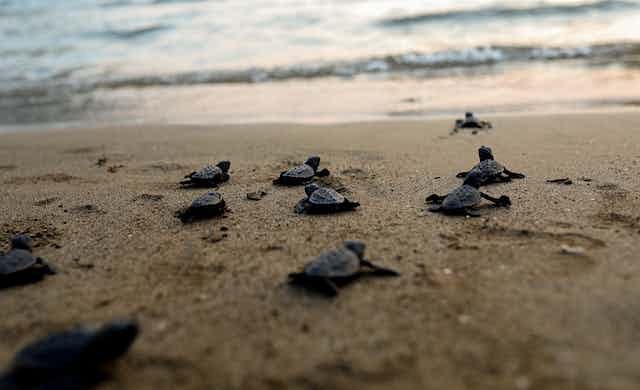
Conservation and Preservation Efforts
Conservation and preservation efforts play a vital role in the protection of nesting sites and the wellbeing of baby turtles. This involves promoting nesting site conservation, supporting turtle habitat restoration, contributing to citizen science projects, and participating in nesting surveys.
Promoting Nesting Site Conservation
Advocate for the conservation of nesting sites and their surrounding habitats. Educate the public, policymakers, and landowners about the importance of protecting these areas. Collaborate with conservation organizations and local communities to establish protected areas, enforce regulations, and promote sustainable land-use practices that benefit nesting turtles.
Supporting Turtle Habitat Restoration
Support habitat restoration initiatives that aim to improve nesting sites for baby turtles. Contribute to projects that focus on restoring degraded habitats, creating nesting-friendly environments, and improving ecosystem health. Volunteer your time or donate to organizations that specialize in turtle habitat restoration to make a positive impact on baby turtle nesting sites.
Contributing to Citizen Science Projects
Citizen science projects provide opportunities for individuals to actively contribute to scientific research and conservation efforts. Participate in citizen science initiatives that focus on turtle nesting and population monitoring. By collecting data and sharing observations, you can contribute valuable information that helps scientists and conservationists understand nesting trends and implement better conservation strategies.
Participating in Nesting Surveys
Participating in nesting surveys allows you to contribute to the monitoring and conservation efforts of baby turtles. Join local organizations or research groups that conduct nesting surveys and assist in data collection. By participating in nesting surveys, you can help gather valuable information about nesting habits, nesting success rates, and potential threats to nesting turtles.
Educating the Community
Educating the community about baby turtle nesting is essential for fostering a conservation-minded society. This involves organizing awareness campaigns, providing educational resources, engaging with local schools, and supporting turtle research programs.
Organizing Awareness Campaigns
Organize awareness campaigns to educate the community about the importance of baby turtle nesting and the conservation of nesting habitats. Use various platforms, such as social media, local news outlets, or community events, to spread awareness and engage the public. Encourage responsible behavior and highlight the steps individuals can take to protect baby turtles and their nesting habitats.
Providing Educational Resources
Provide educational resources, such as brochures, pamphlets, or online materials, that explain the nesting habits of baby turtles and the significance of their protection. Make these resources readily available in community centers, libraries, or visitor centers near nesting sites. Ensure that the information is accurate, engaging, and accessible to people of all ages and backgrounds.
Engaging with Local Schools
Reach out to local schools and educational institutions to incorporate baby turtle nesting awareness into their curriculum. Offer presentations, workshops, or field trips that allow students to learn about nesting turtles and participate in conservation activities. Engaging with schools provides an opportunity to inspire young minds and foster a sense of responsibility towards the protection of baby turtles.
Supporting Turtle Research Programs
Support research programs that focus on studying turtle nesting habits, nesting success rates, and population dynamics. Contribute financially or volunteer your time to assist researchers in their fieldwork or data analysis. By supporting turtle research programs, you can contribute to the scientific understanding of baby turtle nesting and help inform conservation strategies.
In conclusion, creating a relaxing environment for baby turtles’ nesting and egg-laying requires careful consideration and management. By choosing the right location, creating suitable nesting areas, managing vegetation, installing protective barriers, ensuring water access and quality, providing nesting materials, minimizing human disturbance, monitoring and managing nesting sites, engaging in conservation efforts, and educating the community, we can help protect and preserve these delicate creatures for future generations to enjoy. Remember, by taking these steps, you play a crucial role in ensuring the survival and well-being of baby turtles.
